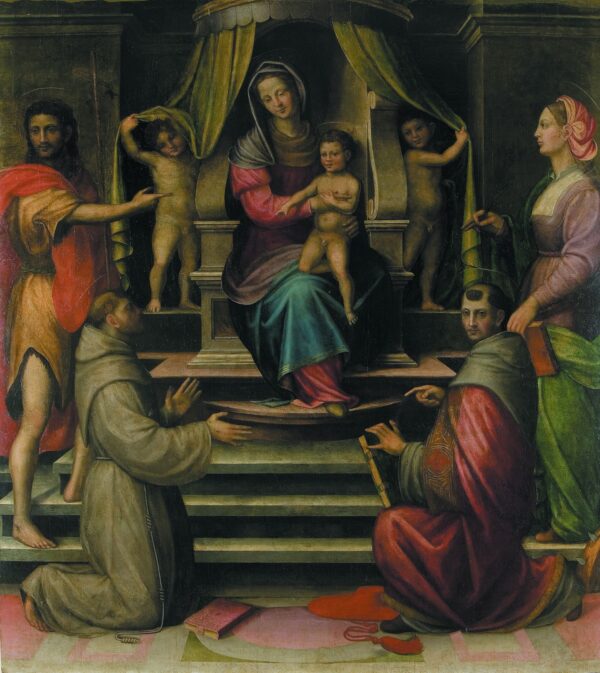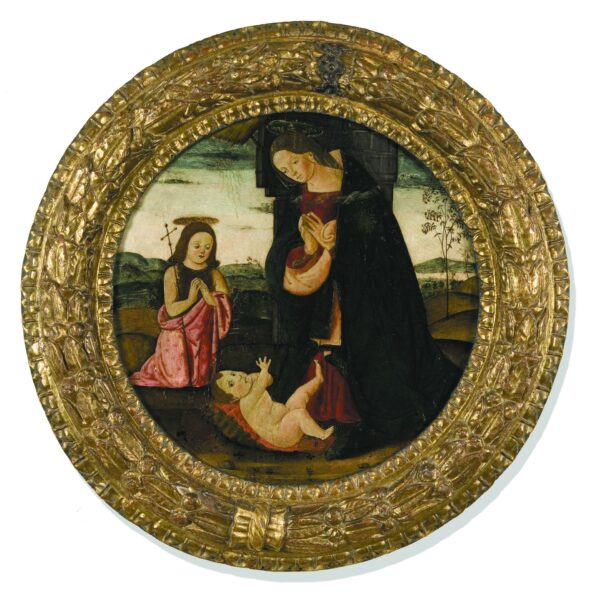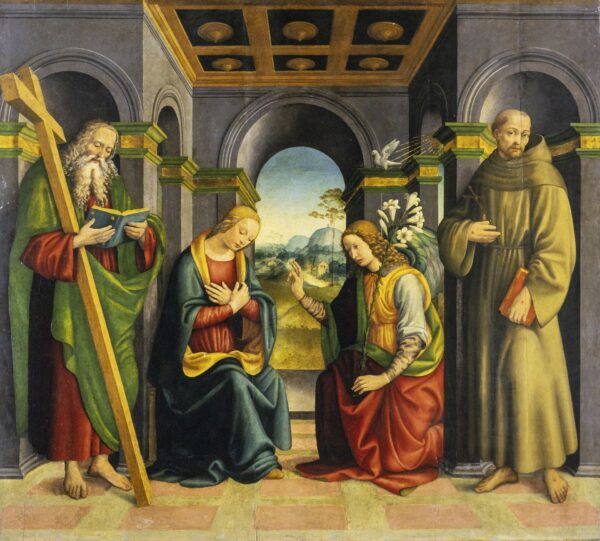- The Museum
- The Rooms
- Archaeology (1-6)
- Art (7-15)
- Room 7. Paintings, frescoes and Minor Guilds from the 13th to the 15th centuries
- Room 8. The great 16th-century paintings
- Room 9. 17th-century paintings
- Room 10. The jewellery room
- Room 11. 17th- and 18th-centuries paintings and jewellery
- Rooms 12-13. The sacred vestments
- Room 14. The relics of Giuseppe Montanelli (Fucecchio, 1813-1862)
- Room 15. The Arturo Checchi collection (Fucecchio 1886 – Perugia 1971)
- Nature (16-17)
- Collections
- Temporary exhibitions
- Events
- Multimedia
- Surroundings
- Versione italiana
Room 8. The great 16th-century paintings
In this room there are large altarpieces commissioned during the sixteenth century by various religious institutions and lay brotherhoods of the city to important Florentine artists. Among these it stands the Annunciation by Raphael Botticini, which was performed between the first and second decade of the 1500s, arguably commissioned by the workers of the Abbey of St Salvatore. The Nativity is another work that allows to confer a name to the conventional “Master of landscapes Kress”. He was possibly Giovanni di Lorenzo Larciani, originally from Larciano, who died during the plague of 1527. The lunette with the blessing Eternal Father by Empoli crowned until 1738 the Allegory of the Conception in the church of St Salvatore. It served as copy for the altarpiece by Vasari for the church of the Santi Apostoli in Florence. Works by anonymous Florentine artists are also the large table with the Madonna of the Canopy and the small tondo with the adoration of the Child and St. John.







